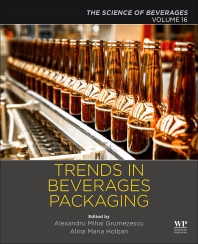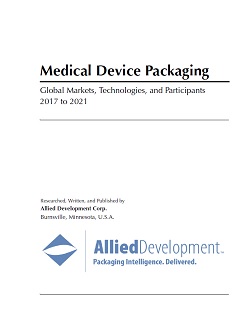Flexible Packaging Trends — 2021 and Beyond




Offering significant potential for brand owners, packaging converters and technology suppliers alike, the flexible packaging market continues to ramp up due to its wide array of advantages, and despite challenges to the environmental performance of the format.
According to MarketsandMarkets, the global flexible packaging industry is forecast to grow at an annual average rate of 4.5% over the next five years, achieving $200.5 billion by 2025. Witnessing significant growth across food, beverage, cosmetics and personal care products through to household and pharmaceutical products, flexible packaging continues its trajectory due to its light weight, durability, graphic impact, convenience and supply chain benefits. When combined with increasing consumer disposable income and the advent of omnichannel retailing, the flexible packaging market is set for a rosy future.
So, what trends can be expected in the industry in 2021 and beyond?
First, the sustainability agenda is returning to the top of consumer concerns as the main Covid-19 shopping trends move through. At the height of the pandemic, pack hygiene and safety features were paramount for consumers. Sealed packaging with products untouched by the human hand became appealing, along with integrated safety features. A plastics renaissance ensued as the appeal of ‘clean’ hygienically packed goods were deemed attractive and flexible packaging benefited. As normality returns to global supply chains, concern for the environment is re-emerging as a top priority for consumers and once again plastic based flexible packaging will be in the spotlight.
Understood by many, the plastic flexible packaging industry faces challenges in meeting the needs of modern waste infrastructures. The inability of coextruded or laminated plastics to be separated to feed single polymer waste streams deems the format, in many instances, non-recyclable. However, numerous packaging converters, including Parkside Flexibles, are developing new, innovative monopolymer, fully recyclable, flexible packaging laminates to meet many of the advantages that the format provides.
Parkside launched Recoflex-PE in 2019, a fully recyclable PE laminate with barrier properties and sealing performance that mirrors multi-polymer designs. Recoverable through established carrier bag collection systems at leading retailers, the innovative solution can be used for most flow wraps, pouches or bags that require a high barrier and are not designed for use in elevated temperatures.
Continuing on the sustainability theme, the transition of plastic to paper flexible packaging will continue. Plastic provides significant benefits in terms of barrier functionality delivering resistance to gases, moisture, light and aroma where needed. However, for certain packaging applications, for example some confectionery packs, then paper is perfectly suitable and enables brands to talk to their heritage and environmental credentials.
If not paper, then compostable packaging has found its way into many food and beverage markets in recent years. As a viable alternative to non-recyclable plastic flexible packaging, compostable laminates offer a form of bio-recycling for the consumer avoiding the much maligned landfill and incineration disposal routes. Parkside has been a leading innovator in this space offering its range of Park2Nature home and industrial compostable film designs for several years. The company works today with a wide range of brands across snacks, beverages and confectionery to name a few successful applications.
Next, we see the rise and rise of pouches. Ideal for shelf standout, the vertical presentation, durability and convenience features built into pouch designs today set the format to further grow this year. With categories from pet to baby food embracing the benefits, the design will continue to expand across traditional flexible packaging applications, as well as break into more e-commerce use.
As consumers return to more normal societal conditions, Parkside also predicts that convenience will climb back up the ladder of pack design expectations. From reclosable lidding films to reduce food waste in the home to the return of sharing packs as consumers return to bbqs and parties, the fantastic array of opening and closing options that flexible packaging can provide will again come to the fore. Take the shareable crisp bag developed by Parkside, offering a laser perforated clever front opening to the pack revealing the contents platter style, to innovative tear off portion packs for kids’ lunch packs, flexible packaging has infinite design options to delight the shopper.
According to Parkside Flexibles, 2021 will be the year that technology integration into flexible packaging will begin to accelerate. As consumers have gotten used to QR codes in Covid-19 track and trace systems and have become more savvy online shoppers, their willingness and ability to adopt technology has increased. As such, the increased use of technology is in turn putting pressure on brands to deliver ‘smart’ packaging. Whether integrating RFID for improved supply chain decision making or using QR codes to connect the consumer to the brand in a more direct and relevant way, flexible packaging provides significant opportunities for brands to generate data and deliver more effective marketing campaigns when integrating their packaging.
In summary, 2021 looks bright for the flexible packaging sector. Despite the challenges of Covid-19, innovation abounds, and brands and their packaging supply chains are working hard to deliver next generation thinking on format development. From new eco-friendly substrates to disposal options, new opening and closure solutions to embracing the integration of new technology, it’s a win win situation for brands, converters and consumers alike when integrating flexible packaging into the brand portfolio.
For more information, visit www.parksideflex.com
Looking for a reprint of this article?
From high-res PDFs to custom plaques, order your copy today!











